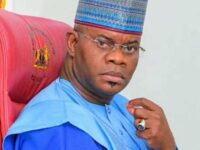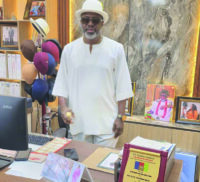The protests should be seen as an insistence on authenticity than as an assault on art, says Okechukwu Uwaezuoke
ART BEAT
For the art community, Sunday, November 2, in Benin City should have been a day for celebration. But, as it turned out, history proclaimed in clear terms that it refuses to be sealed behind museum glass. The Museum of West African Art (MOWAA), the ambitious multimillion-dollar project meant to reclaim the glory of the Benin Bronzes, became a theatre of protest. Videos show a cluster of protesters ordering foreign guests off the grounds, their anger palpable, their voices ringing with the sense of a story interrupted.
It is easy to see MOWAA as a triumph on paper: state-of-the-art preservation labs, gleaming galleries, and the compelling promise of a homecoming for the looted treasures of 1897. Yet paper and stone cannot conjure legitimacy. The bronzes themselves—the very reason this temple was imagined—remain elsewhere, caught in disputes over control that are as political as they are cultural. This, the museum without its essence is, inevitably, a museum without its soul.
Local resentment has been simmering for some time. A resident told the BBC that much of the anger stems from what many perceive as a hijacking of an Edo project. “The Benin Oba [king], traditional rulers, and the government of Edo are not happy about it,” the resident explained. Edo was even part of the museum’s name at first, before it was quietly excised, a symbolic erasure that stings. Executive director Phillip Ihenacho maintains the change was motivated by a desire to cast MOWAA as a West African, rather than solely Nigerian, institution. But ambition, however noble, cannot paper over local suspicion.
Then, there is also the fact that history has a long memory. Belgium-based Nigerian artist Godfrey Williams-Okorodus recalls watching the National Museum in Benin ransacked during the 1989 SAP riots, ivory tusks in the hands of looters, prisoners fleeing the blaze. “I knew then that this is not a safe place for a museum,” he writes. And his reflection is instructive: MOWAA began on uncertain ground. The state governor was at odds with the Royal court, and the fissures were never repaired. When asked what might happen when political winds shift, one can almost hear his question echo through the museum’s empty halls: What happens to the treasures if the caretakers themselves cannot agree?
Williams-Okorodus’ own struggle with establishing an Ifa museum mirrors this tension between vision and legitimacy. For decades, he has accumulated over 500 objects on Ifa divination, dreaming of returning them to Yorubaland, yet hesitant because a museum cannot flourish without communal consent. His efforts were met with opposition from scholars, intermittent support from traditional leaders, and the occasional disheartening silence. Yet he persists, believing that forces greater than mortals themselves guide the work. His story reads like a parable for MOWAA: ambition is admirable, but it is hollow if it is not rooted in the people it seeks to serve.
The history of the Benin Bronzes themselves only sharpens the irony. Looted in 1897 during a British punitive expedition, they are more than carved wood and bronze; they are the lifeblood of a kingdom, repositories of ritual, history, and identity. Their absence from MOWAA is felt as a wound, a reminder that restitution is never simply a matter of returning objects—it requires dialogue, trust, and a willingness to reckon with centuries of dispossession.
MOWAA has responded with courtesy, cancelling preview events and urging visitors to avoid the campus until calm returns. “We are deeply grateful to all our guests — many of whom travelled long distances to be here — for their understanding, patience, and resilience. We sincerely apologise for any inconvenience this situation may have caused,” the museum’s statement reads. Admirable as this is, a polished apology cannot substitute for legitimacy earned in the court of local conscience.
This is the crux: museums are not merely buildings; they are political and cultural organisms. Without genuine inclusion of local stakeholders—traditional rulers, community leaders, and ordinary citizens—MOWAA risks becoming a monument to ambition rather than a homecoming for heritage. The protests, therefore, were not an assault on art, but an insistence on authenticity, a demand that history be reclaimed in form as well as spirit.
Sunday’s unrest should not be seen as a failure but as a lesson. MOWAA may yet fulfill its promise, but to do so it must answer the question louder than any chant at its gates: Whose museum is it, really? Until Benin City’s voices are not just heard but integrated into its governance, the museum will stand in limbo—shimmering, ambitious, and, at its core, incomplete. And until that reconciliation is achieved, no gallery, no matter how dazzling, can fully reclaim what was lost in 1897.


















Leave a comment